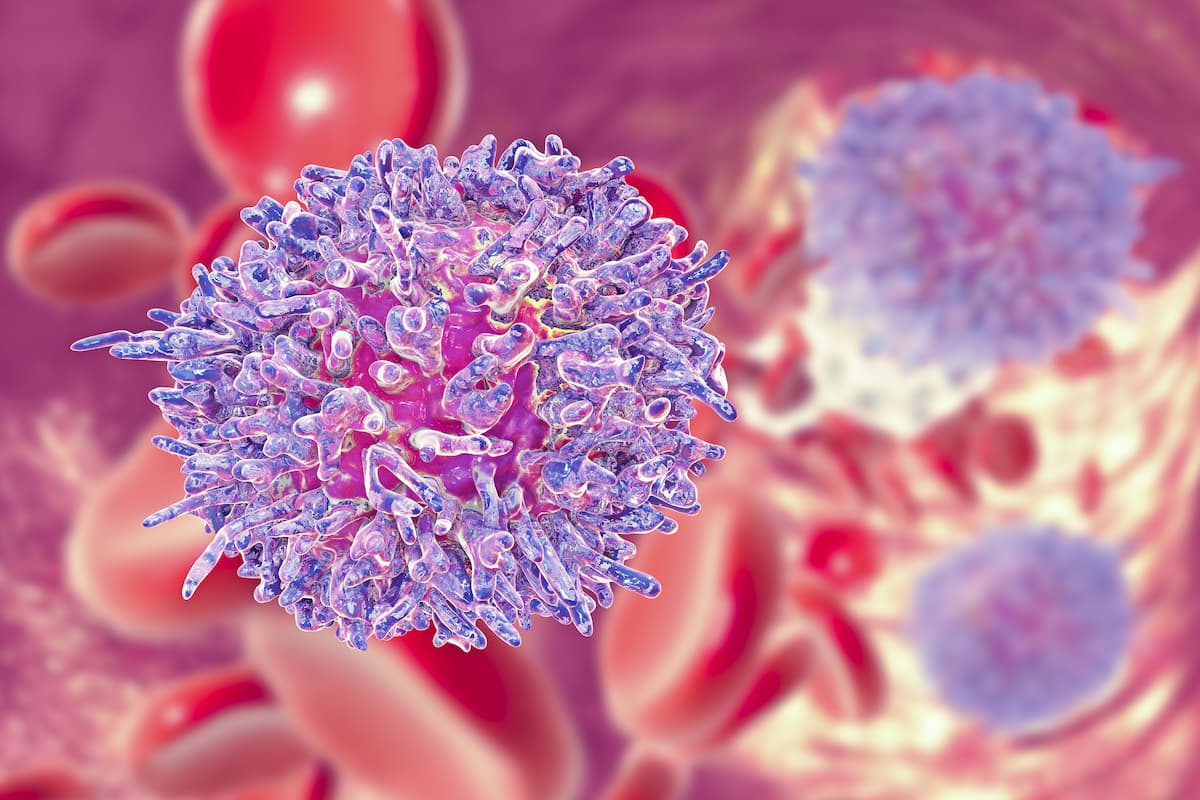Ibrutinib/Venetoclax Appears to Reduce Clinical/Molecular Relapse in CLL
The potential reduction in relapse in patients with unresectable chronic lymphocytic leukemia appears to happen regardless of minimal residual disease status 3 months post-treatment and immunoglobulin heavy-chain variable region mutational status.
"The current lack of a clear relationship between MRD status at [3 months post-treatment] and PFS with ibrutinib plus venetoclax is a novel finding," according to the authors of an analysis of the phase 3 GLOW trial (NCT03462719).

Ibrutinib (Imbruvica) and venetoclax (Venclexta) resulted in a reduction of clinical and molecular relapse 1 year following treatment compared with chlorambucil plus obinutuzumab (Gazyva) among older patients with previously untreated chronic lymphocytic leukemia (CLL), according to findings from an analysis of the phase 3 GLOW trial (NCT03462719) published in the Journal of Clinical Oncology.
Three months following treatment, undetectable MRD at a sensitivity of less than 10-5 in bone marrow was reported in in 40.6% of patients treated with the ibrutinib/venetoclax regimen compared with 7.6% of those treated with the control regimen. The corresponding values for undetectable MRD at the same sensitivity in peripheral blood were 43.4% and 18.1%, respectively. Moreover, concordance between bone marrow and peripheral blood at this sensitivity was 90.9% in the experimental arm and 36.8% in the control arm, and concordance increased in the former arm to 97.8% when using a stricter cutoff in peripheral blood (<10-5) than in bone marrow (<10-4).
Among patients with known MRD status in bone marrow at 3 months who achieved complete response (CR) or CR with incomplete bone marrow recovery as their best response, rates of undetectable MRD at a sensitivity of less than 10-4 were 66.7% with ibrutinib plus venetoclax and 30.8% with chlorambucil plus obinutuzumab. The rates were 64.1% and 21.3%, respectively, among those with a partial response (PR) as their best response.
At 12 months after treatment, undetectable MRD at less than 10-5 in peripheral blood occurred in 36.8% vs 6.7% of patients treated with the experimental vs control regimens, respectively. Moreover, 80.4% of patients retained undetectable MRD status at less than 10-5 in the experimental arm compared with 26.3% of patients in the control arm.
Notably, in the experimental arm, investigators reported no correlation between MRD status at 3 months and progression-free survival (PFS) in the first year post-treatment. The estimated PFS rate 12 months after treatment was 96.3% (95% CI, 86.0%-99.1%) for patients with undetectable MRD in bone marrow vs 93.3% (95% CI, 75.9%-98.3%) for patients with detectable MRD. There was, however, a relationship between MRD and PFS in the control arm.
“The current lack of a clear relationship between MRD status at [3 months post-treatment] and PFS with ibrutinib plus venetoclax is a novel finding,” the investigators wrote. “Although there are rational mechanistic explanations, we observed that the detectable MRD subgroup was slightly enriched with patients with less proliferative disease (i.e, patients with mutated IGHV), and the post-treatment outcomes may reflect that these patients had a lower propensity for early disease progression.”
In total, 211 patients enrolled in the GLOW trial and were randomly assigned 1:1 to receive either the experimental or control regimen. Baseline characteristics were comparable between arms. The median follow-up for this analysis was 34.1 months.
Investigators also reported updated survival findings according to independent review committee assessment. Superior PFS outcomes persisted among those treated with ibrutinib plus venetoclax vs chlorambucil and obinutuzumab (HR, 0.212; 95% CI, 0.129-0.349; P <.001), with estimated 30-month PFS rates of 80.5% vs 35.8%, respectively.
In terms of toxicity, 1 additional patient in the control arm experienced new serious treatment-emergent adverse effects (TEAEs) since the primary analysis. In the experimental arm, the proportion of patients with a second primary malignancy during the study increased from 7.5% to 9.4%. There was a corresponding increase in the control arm from 9.5% to 11.4%. Non-melanoma skin cancers affected 4 patients treated with ibrutinib plus venetoclax and 3 treated with chlorambucil plus obinutuzumab.
References
Munir T, Moreno C, Owen C, et al. Impact of minimal residual disease on progression-free survival outcomes after fixed-duration ibrutinib-venetoclax versus chlorambucil-obinutuzumab in the GLOW study. J Clin Oncol. 2023;41(21):3689-3699. doi:10.1200/JCO.22.02283